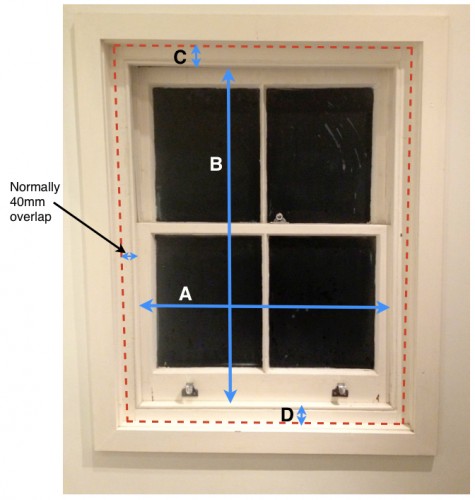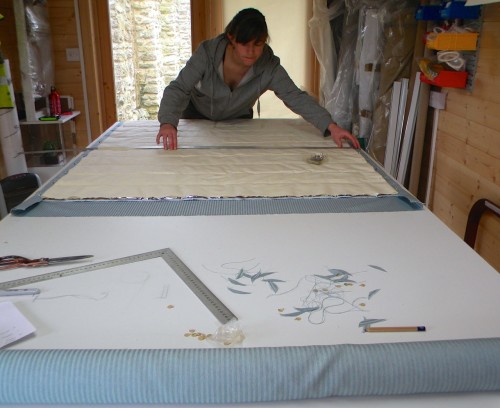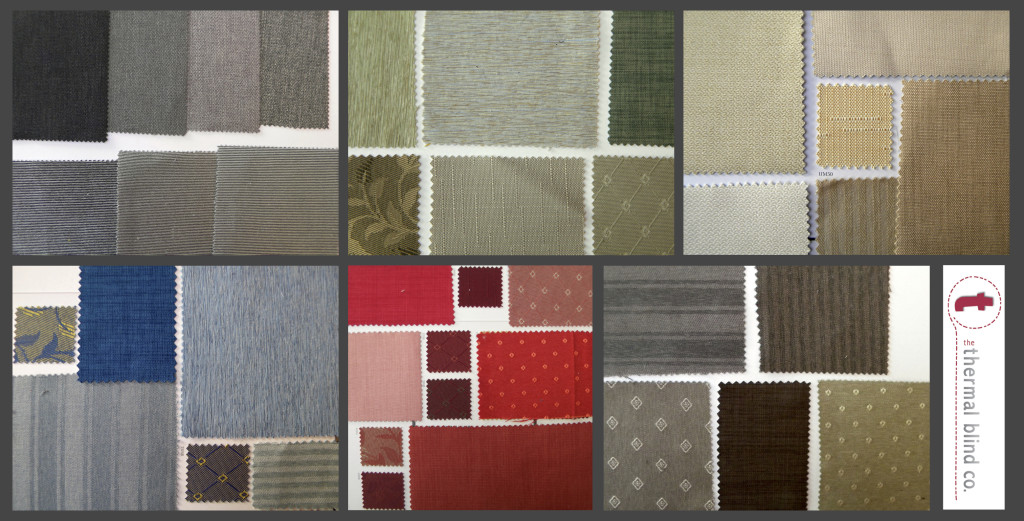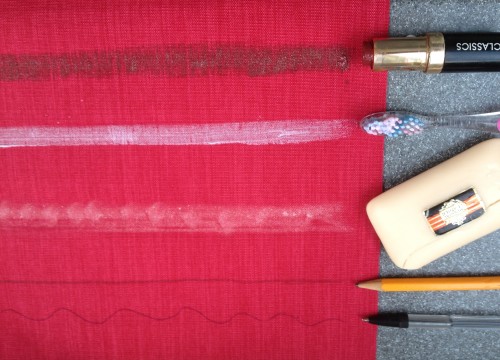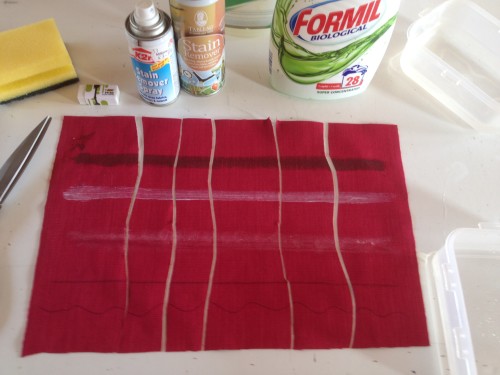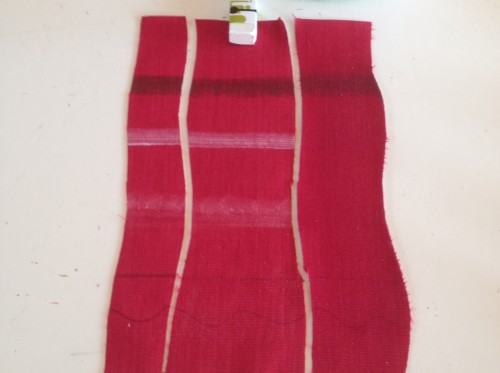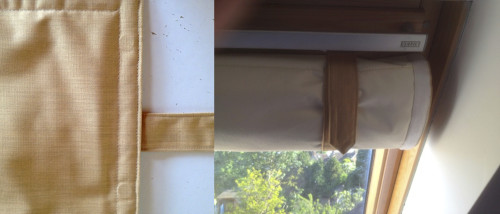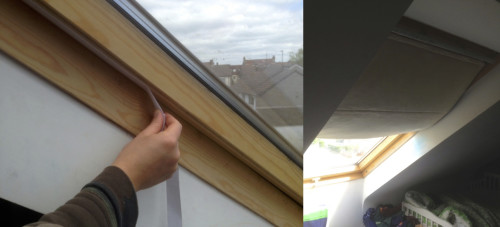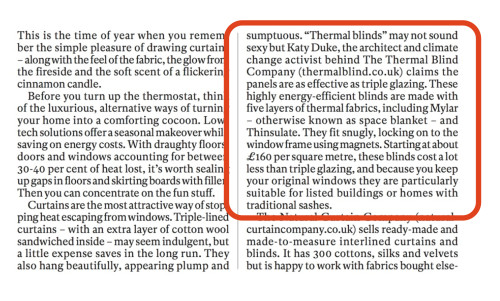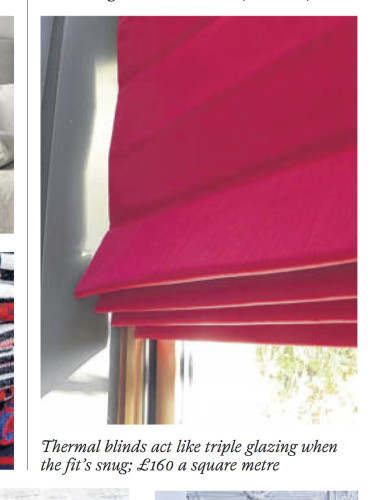How to do it – for a sash window. The blinds were designed specifically for sash windows, though they work on other windows (see this post). Here is a drawing showing how they fit & which dimensions we need. You can download the instructions as a pdf (includes photos) here and if you’d like a Word version of the dimension chart to fill in it is available here.
Measuring up – non-sash windows
How to do it for a non-sash window. Often the blinds are fitted in the recess of a window reveal. Because the headrail is 44mm deep it is usually fitted in front of the existing frame, fixed either up into the soffit or into the window frame (see below).
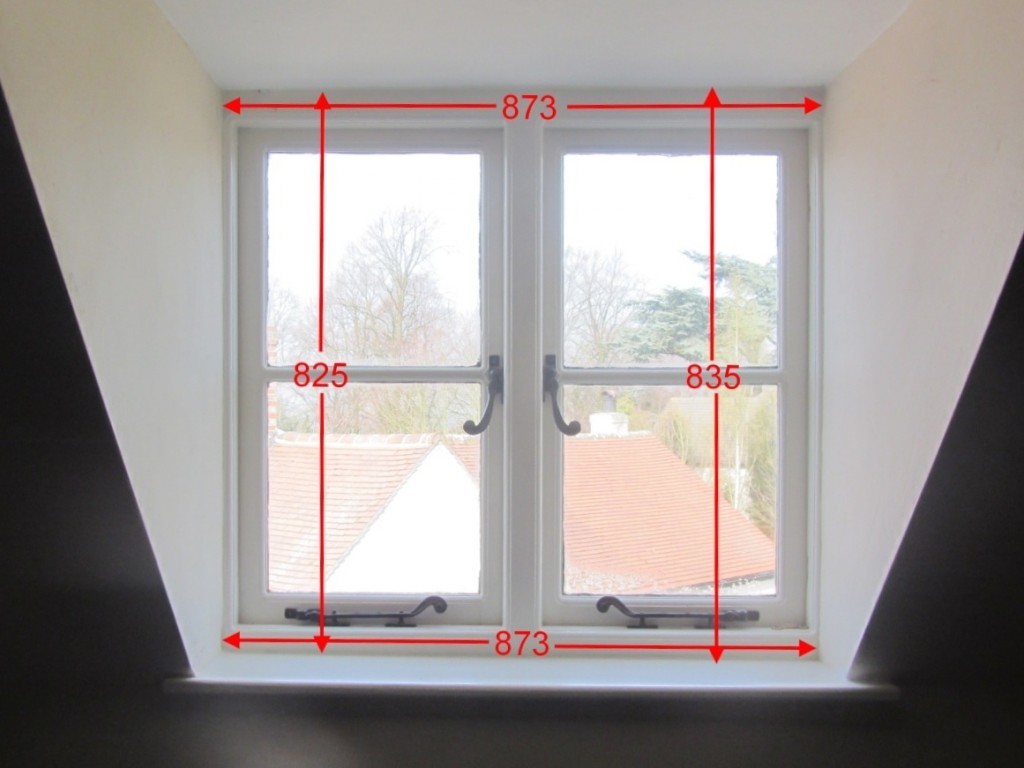
Measurements needed for non-sash windows
We will need the exact measurements of the width & height of your recess, together with photos showing each corner of the window (without curtains or blinds), plus the floor to sill height. Download instructions (pdf) here, or a Word version here. The blind will be made about 8mm narrower than the recess so it doesn’t rub on the walls.
Making mats for RAISE
In the middle of the blinds is a 3-layer composite – a ‘mylar sandwich’ with thinsulate in the middle. We glue it together from huge rolls & sew it into blinds in the She Shed. The offcuts of the ‘sandwich’ are are often large but not wasted, we use them as packaging to protect the blinds in transit. It struck me as wasteful to use such a high tech product just once in this way.
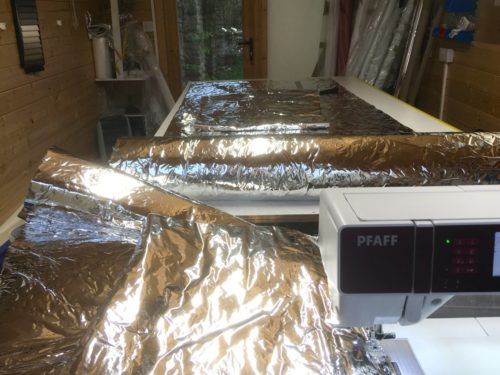
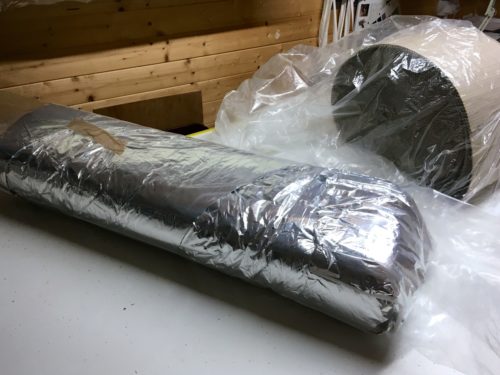
Mylar is ‘space blanket’, often used as emergency blankets, and thinsulate is used for polar gloves, so the offcuts are ideal for warm & lightweight sleeping mats, clothing or protection from cold & damp.
We now stitch the edges of the larger offcuts and give them as multi-purpose mats / blankets to the Refugee Action in Somerset East (RAISE). (Facebook page). They are a group who coordinate ongoing support to refugees around the world. They meet every Monday afternoon at ‘Your Storage Space’ in Frome to sort through items and arrange delivery. Some suitable items go to Calais, others to Syria, working with RAFT in Taunton. (Facebook page). Here is a list of their achievements.
There is a long list of items needed on the website. At the moment men’s gloves, hats, scarves, socks and pants are priorities but also blankets, clothes for women and children, travel cots, walking aids, toiletries, and cold remedies.
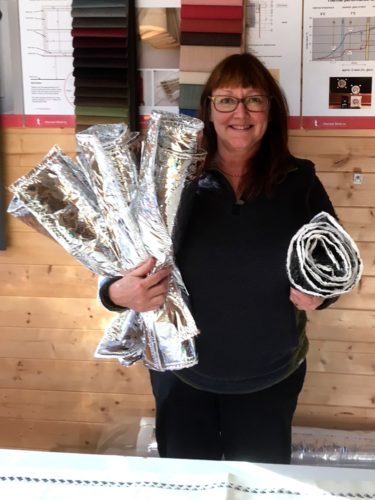
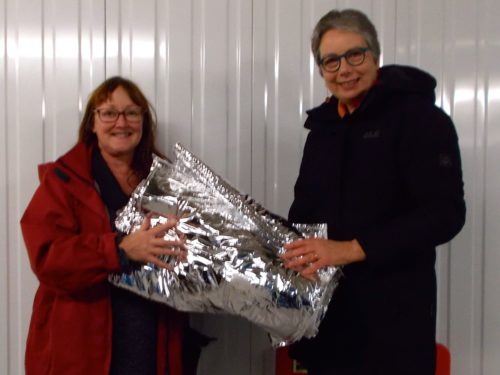


In the workshop
Switch!
See our thermal blinds on Saturday 5th March at this Conference & Show in Frome. Some fascinating speakers & case studies. Price includes coffee & lunch and there is a 40% discount for locals. Frome is also a great place to visit, shop & a good base for sight-seeing. Why not make a weekend of it? Venue is the Cheese & Grain right in the middle of the town centre.
New fabric launch
We are excited to launch a new range of fabrics, carefully tested to ensure they work well with our 25-component thermal blinds. For samples please send an email with a photo of your window(s) & sizes and a list of the fabrics you are interested in. Check the ordering page for measuring guides.
The images below are split into the 3 price bands, with Astoria & Waldorf offering the best value blinds. Click and zoom for close-up view.
There are 3 price ranges, A (Waldorf & Astoria, 32 colours), B (Motif & Velton, 40 + 21 colours) & C (Agua, 10 colours, fireproof & suitable for public buildings). Below these you can see some colour ranges for inspiration – Creams/Beiges, Greys, Greens, Reds, Browns, Blues & Darks.
Cleaning thermal blinds
Someone asked the other day how to clean a red blind in a bathroom if it were to be stained with soap or toothpaste marks. So we decided to go one step further & test for pencil, pen & lipstick too, using a variety of cleaning methods. Here are the results.
Because the blinds have 25 components, one of which is a sewn-in aluminium bar along the bottom edge, they are not ideal for dry cleaning, though that is certainly a possibility. Bespoke curtains often must not be washed at all as they can shrink badly, & makers tend to recommend just vacuuming them. But our blinds are more robust than this so we plastered on the offending products, left them for 3 days to mature & then tested several cleaning methods.
First step was to take a rubber to the pencil & pen marks. This removed the majority of the pencil and some of the pen (middle sample below).
We then washed the face of all but one of the samples with a biological washing liquid (right sample above). This was applied with a sponge and rubbed pretty vigorously. Finally on one sample we used spray cleaner & on another sugar soap!
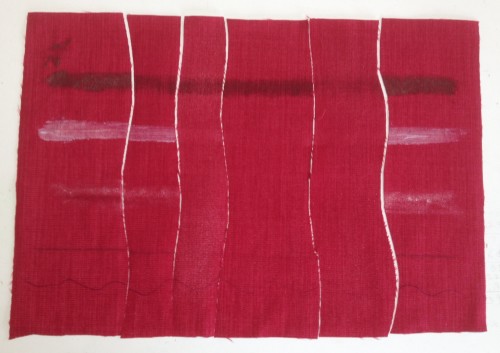 Here you see the results, from left to right;
Here you see the results, from left to right;
- Control, 2. spray cleaner only, 3. rubber, washing liquid then sugar soap, 4. rubber, washing liquid, 5. rubber, washing liquid then spray cleaner, 6. control.
So as you can see lipstick is the major offender, it almost comes off on sample 5 but could have been successful if tackled immediately. All the other stains can be removed, starting with a simple rubber on pen or pencil, then scrub wash & finally use a spray cleaner if necessary. Don’t use sugar soap!
New ingenious blind types
Now our roman blinds are an established product we’ve turned our attention to other types of windows with both thermal and blackout problems. With a combination of magnets, velcro & ingenuity we have several solutions which might help your own problem windows and doors.
There are several ways of attaching, folding & fixing suitable for; narrowboats, unusual windows, door panels, velux windows, campervans and more. Here are some of our ideas.
These are mostly simple panels with hidden secrets – we can use velcro, magnets or a combination of both, with fibreglass rods for stiffness if required.
The velux solution is a combination of velcro in the top half of the window, magnets in the bottom half & a tab tie so you can roll it right up. So the halfway-open solution is fast & easy, just clicks open & closed.
Unique blinds?
So what’s unique about our thermal blinds? Well, for starters, they are truly insulating, unlike most other ‘thermal’ blinds which rely on either a single layer of foil material or open-ended folds of paper-like material containing tiny pockets of air. Our blinds have 3 insulating components – two layers of Mylar – a reflective, resistive metal-coated ployester. These both keep heat in and stop solar overheating. Then a 7mm thick Thinsulate layer, made of thousands of tiny [15 micrometres (µm) in diameter], fibres, trapping air (& used in Jag soft-top roofs, apparently). Together these materials bring the insulation level to the equivalent of triple glazing. No other blinds on the market achieve this level of insulation.
Secondly, unlike most roman blinds which hang in front of your wall or window, they fit tight against the frame and overlap at the top & sides, bringing the overlapping edges in contact with your window frame. This reduces gaps around the edges to a minimum. And thirdly they have tiny hidden magnets sewn inside, matched by self-adhesive magnets (just 1mm thick) which you put on your frame. This gives a very snug fit and stop that down-draught from cold glass which can drop into your room. Continue reading
It’s getting cold!
We’ve lined the inside of the door panels to our workshop with offcuts from the thermal blinds, ssems to have done the trick! Now its getting chilly we are working hard to finish your orders promptly and enjoying working with our new fabrics.
We’ve had some great publicity via the Homes & Design section of The Independent early in December (pics here but theres no online version) and a similar piece in Homes & Property. If you’d like a quote just send us a photo of your windows and the sizes & we’ll do the rest. See our ‘ordering‘ page for measuring details.
Blind articles
We’ve had some really lovely pieces written in the last couple of years, the latest being on the blog ‘All Things Bright & Good‘, a lovely blog by Judy who I met at a Frome ‘Jelly’ (an event where home workers work together for a day). She has written a book about homeworking & also runs the blog ‘Working from Home Wisdom‘ which is full of great tips on homeworking and there did an article about me in unusual home working jobs.
Judy gave me her loft-stored sewing machine when I first set up, it was her 18th birthday present so very special! It was my workhorse for two years til I bought my amazing Pfaff.

The She-Shed and Pfaff
We also got a mention by Julia Kendell in the Sunday Times, by Roger Hunt on ‘old windows need not be cold‘, a very fascinating blog, and I believe we are mentioned in his book too ‘Old House Eco Handbook‘ (must get a copy!)
Julia said;
“Heavy lined curtains are a tried and tested way to keep in heat, but there are more effective options. “A clever solution is thermal blinds,” She recommends a new product by the designer Katy Duke. Her thermal blinds lock onto the frame with magnets and are made with materials used in skiwear.
Roger said;
“As an alternative to replacing windows there are a variety of low impact and cost effective alternatives:
Rattling windows may be wedged or, with sash windows, a fastener with a cam action which draws the two sashes together can be fitted.
Shutters and heavy curtains reduce draughts and keep heat in, especially if they’re closed before it gets dark so the warmth of the day is retained. One further step is to install thermal blinds which incorporate a variety of insulating and reflective layers designed to minimise conduction through the fabric.
We also got a lovely write up in Blinds & Shutters magazine when Katy won the PEA Award.
The next article expected is in The List, a very popular local magazine. Check out the December issue!
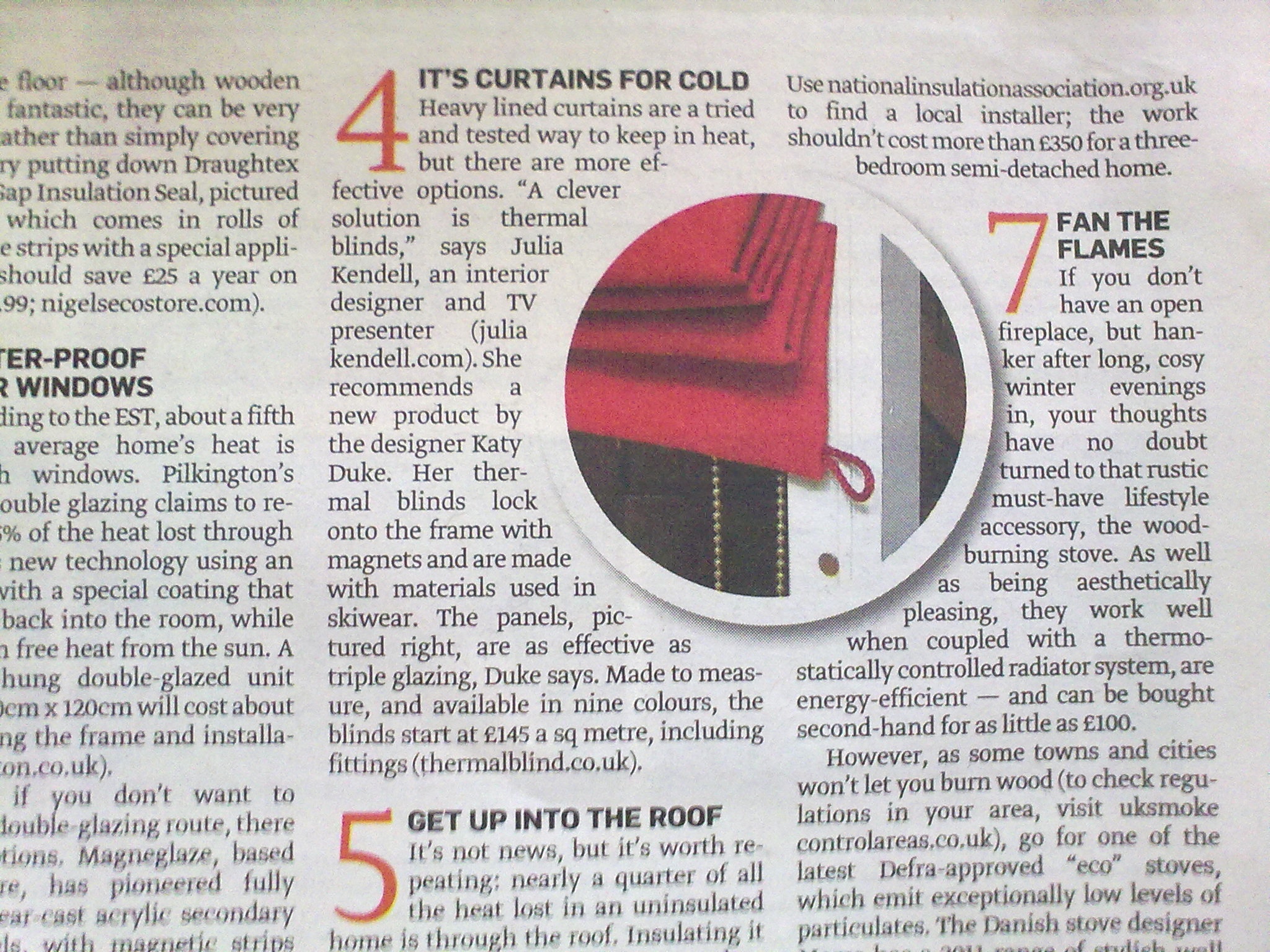
Sunday Times article by Julia Kendell
Four Shows
We will be showing our thermal blinds at four one-day shows in the next month – come & see us in Highgate, Bath, Frome or Wells;
1. Saturday 13th September, Highgate, London. 21st Century Homes. 11am – 4.30pm, Channing School, The Bank N6 5HF.
2. Sunday 14th September, Bath. Bath Home Improvement Fair. 12 noon – 4pm, The Guildhall, Bath.
3. Sunday 14th September, Frome. One Planet Sunday. 10am – 4pm, Cheese & Grain, Frome.
4. Saturday 27th September, Wells. Transition Wells Energy Day. 10am – 4pm, Wells Town Hall.
